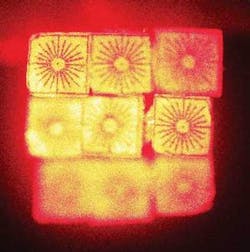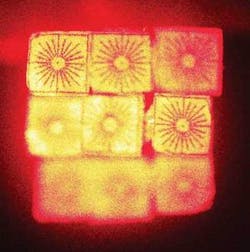Holographic target measures astigmatism
Building on previous research that used a hologram to measure spherical aberration of the human eye, researchers in the School of Optometry and Vision Science at the University of New South Wales (New South Wales, Australia), have developed a holographic target that can measure the cylindrical errors (astigmatism) of the human eye.
The current method of looking at a distant object through a number of lenses to prescribe corrective glasses is at best cumbersome. In an alternate approach, the researchers recorded the wavefront emanating from various sunburst patterns located at different distances from the eye in a hologram. When a subject views through this hologram (illuminated by a plane wave), he or she will see the images of various sunburst patterns located at different distances from the eye. The light reaching the eye from these images corresponds to diopter (D) values in the range of -2.0 to +2.0 D, with a separation of 0.5 D between adjacent images. The cylinder axis and power can be worked out simply from the orientation of the lines in the sunburst patterns that are most clearly seen by the subject, and a prescription can be made for the astigmatic eye. Contact Kodikullam V. Avudainayagam at [email protected].

